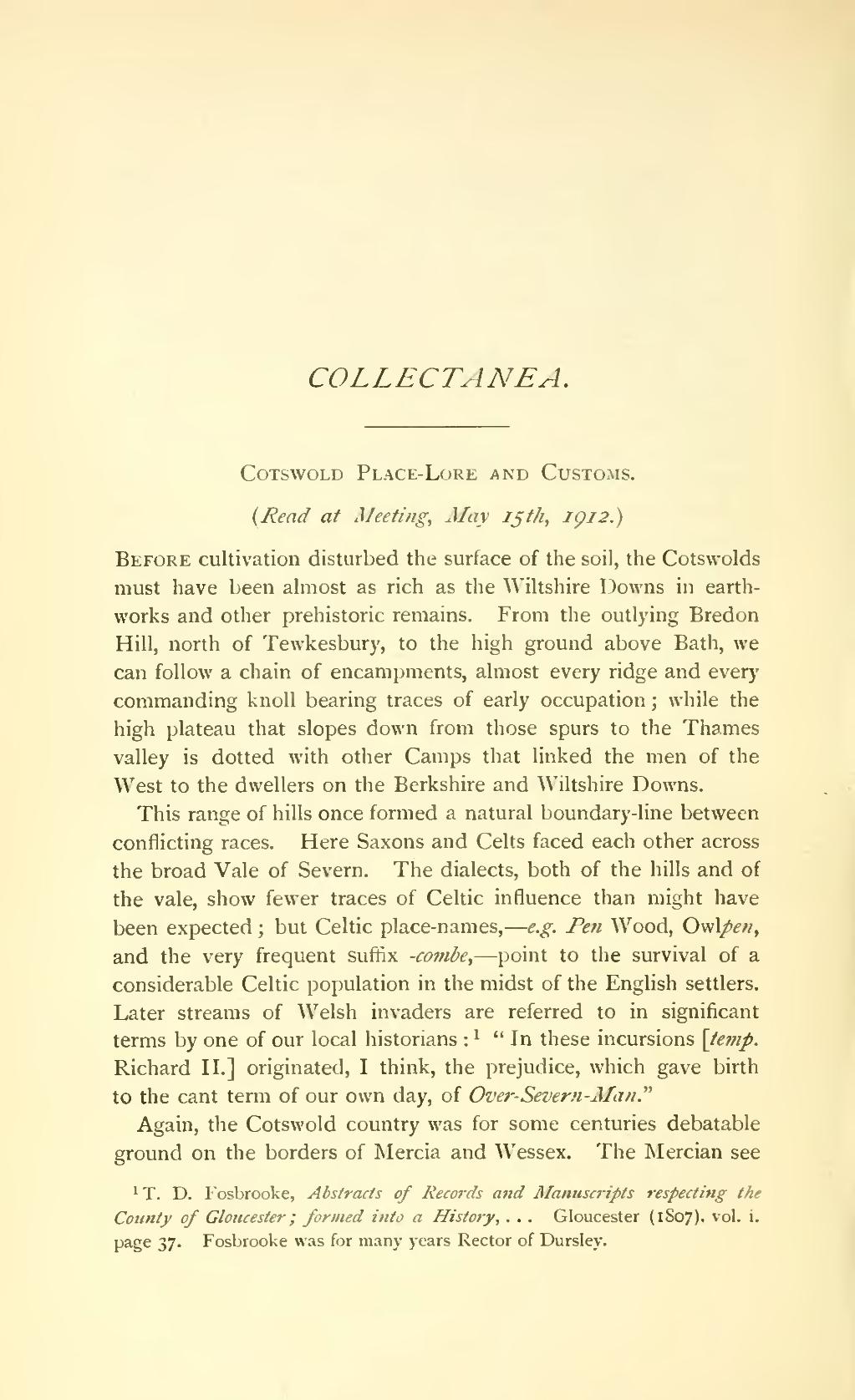COLLECTANEA.
CoTswoLD Place-Lore and Customs.
{Read at Meeting, May isth, igi2.)
Before cultivation disturbed the surface of the soil, the Cotswolds must have been ahiiost as rich as the Wiltshire Downs in earth- works and other prehistoric remains. From the outlying Bredon Hill, north of Tewkesbury, to the high ground above Bath, we can follow a chain of encampments, almost every ridge and every commanding knoll bearing traces of early occupation ; while the high plateau that slopes down from those spurs to the Thames valley is dotted with other Camps that linked the men of the West to the dwellers on the Berkshire and Wiltshire Downs.
This range of hills once formed a natural boundary-line between conflicting races. Here Saxons and Celts faced each other across the broad Vale of Severn. The dialects, both of the hills and of the vale, show fewer traces of Celtic influence than might have been expected ; but Celtic place-names, — e.g. Peri Wood, OviXpen, and the very frequent sufhx -combe, — point to the survival of a considerable Celtic population in the midst of the English settlers. Later streams of Welsh invaders are referred to in significant terms by one of our local historians : ^ "In these incursions [iejfip. Richard H.] originated, I think, the prejudice, which gave birth to the cant term of our own day, of Over- Severn- Af a /i."
Again, the Cotswold country was for some centuries debatable ground on the borders of INIercia and Wessex. The Mercian see
1 T. D. P'osbrooke, Abstracts of Records and Manuscripts respecting the County of Gloucester ; formed into a History, . . . Gloucester (1807), vol. i. page 37. Fosbrooke was for many years Rector of Dursley.
